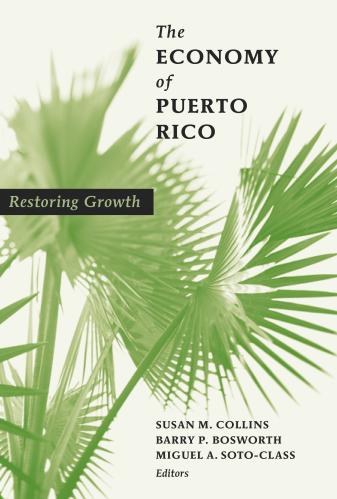Studies in this week’s Hutchins Roundup find that a substantial portion of the difference in wage growth for routine and non-routine jobs is attributable to reduced search frictions, the CARES Act successfully mitigated the potential increase in income inequality following the pandemic, and more.
Want to receive the Hutchins Roundup as an email? Sign up here to get it in your inbox every Thursday.
Non-routine workers benefit more than routine workers from improved job-matching
In recent decades, improvements in information and communication technologies have reduced search frictions in the labor market, leading to better matches between firms and workers. Paolo Martellini at the Federal Reserve Bank of Minneapolis and Guido Menzio at NYU argue that workers in non-routine jobs have benefited the most from these changes. Because non-routine jobs require greater worker specialization, the productivity and wages of non-routine workers are more sensitive to how closely workers’ skills match a firm’s requirements. Conversely, the productivity of routine workers doesn’t vary much across jobs so there is little scope for higher productivity or wages from better firm-worker matching. Using data from the 1980 Census and the American Community Survey, the authors find, that between 1980 and 2015, firms with more specialized jobs saw higher wage growth than firms with primarily routine jobs. They conclude that the differential effects of improved job matching can account for more than a quarter of the 20 percentage point difference between wage growth for routine and non-routine occupations since 1980.
The CARES Act temporarily reduced income inequality
Using data from the Current Population Survey, Guido Matias Cortes from York University and Eliza Forsythe from the University of Illinois, Urbana-Champaign, find that while the COVID pandemic resulted in higher rates of job loss for the bottom of the earnings distribution, the CARES Act successfully mitigated the potential increase in income inequality. Specifically, they find that workers in the bottom quintile of the earnings distribution were twice as likely to lose their jobs as those in the top quintile; the bottom decile saw a reduction in average labor earnings growth rates of over 40 percentage points. However, since the $600 a week Pandemic Unemployment Compensation in the CARES Act was meant to replace median weekly earnings and most displaced workers fell below the median wage, the effect was to reduce income inequality. Workers in the bottom decile saw average earnings increase by over 50% and the bottom third of pre-pandemic earners received 49% of unemployment insurance payments. The authors conclude that these payments served as additional stimulus to aggregate demand and, in conjunction with the $1,200 per person federal aid preserved consumption among low-income individuals; the expiration of these benefits, they say, cuts off an important source of aggregate demand.
Risk of economic disaster helps explain the equity premium puzzle
Economists have long discussed the equity premium puzzle, the sizable outperformance of the stock market relative to Treasury bills that seems to imply investors are exceedingly risk averse. One possible explanation is that investors aren’t overly risk averse but are instead reacting to the real possibility of rare disasters—even if these disasters are rarely observed in the data. David S. Miller of the Federal Reserve Board argues that federal funds futures offer a new way to identify the probability of these rare events, because the Fed generally responds to disasters with unscheduled inter-meeting cuts in the fed funds rate. Using intermeeting risk as a measure of disaster risk, he finds that excess returns on equities are higher when the probability of a disaster is deemed to be higher—suggesting investors are responding to the higher risk environment by demanding higher returns on equities. He concludes that the risk of economic disasters explains a significant portion of the equity premium puzzle.
The Fed releases papers related to revised monetary policy framework
The Federal Reserve posted several background papers prepared for Fed officials as they considered revisions to their statement of long-term goals and monetary policy strategy. Among the topics are the challenges of the effective lower bound, the use of the balance sheet as a tool of monetary policy, and distributional consequences of monetary policy.
Chart of the week: Federal outlays and revenues as a percentage of GDP
Source: Congressional Budget Office. Assumes current law and no additional pandemic relief legislation.
Quote of the week:
“I’m always wary of drawing conclusions that the world’s going to be different. After 9/11, I didn’t travel for three months. And we installed videoconference terminals in everyone’s desks figuring travel was a thing of the past, and it clearly wasn’t. So it is easy to imagine a scenario where we have a pandemic, or treatment, or rescission of the virus, and everyone goes back to what we used to do. If you tell me that’s not the case, in other words we have the pandemic with us for some time, then I think there is real risk to the growth of the economy—first and foremost in the labor market. You know, the growth in participation over the last 30 or 40 years has been driven significantly by women increasing their participation in the workforce and by people 55 and up increasing their participation in the workforce. And if you give me a world where schooling is at home, where people of my age are nervous about engaging in personal commerce, I think it’s pretty hard to imagine us maintaining the size of the workforce that we have today at a time where we have low fertility and low immigration,” says Tom Barkin, President of the Federal Reserve Bank of Richmond.
“On the productivity side, I want to be a little more optimistic, at least in the medium-term. It’s clearly accelerated technological evolutions—think telemedicine. People are automating roles, distance learning. Online shopping, of course. And all those are somewhat more productive once you get [them] deployed at scale… [T]here’s obviously a transition issue. But capitalism is a pretty adaptive system….I want to acknowledge the fact…that uncertainty is very high. And it’s pretty hard to move to the future if the answer is: You may have a vaccine right around the corner.”
The Brookings Institution is committed to quality, independence, and impact.
We are supported by a diverse array of funders. In line with our values and policies, each Brookings publication represents the sole views of its author(s).










Commentary
Hutchins Roundup: Job matching, income inequality, and more
September 3, 2020